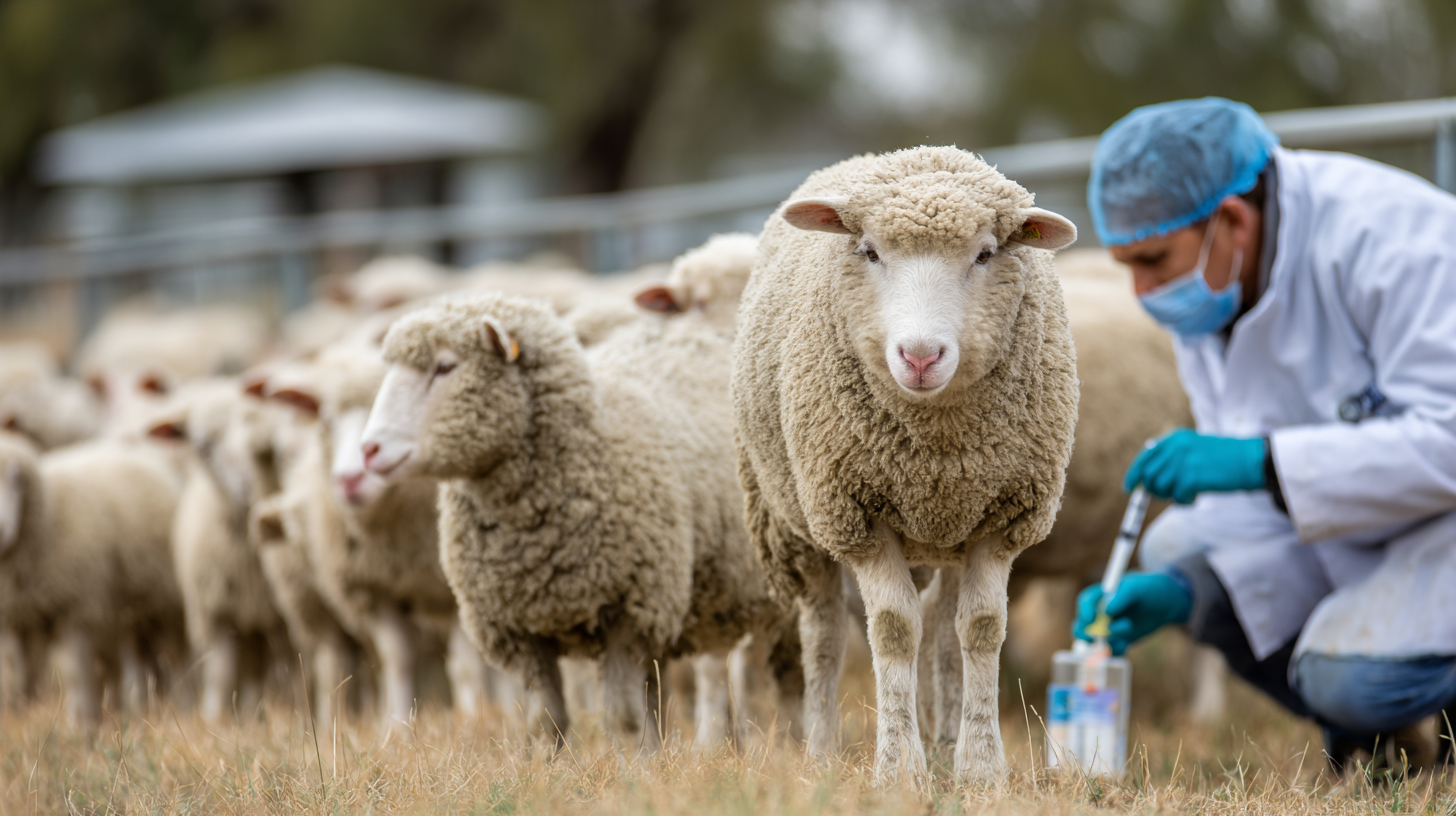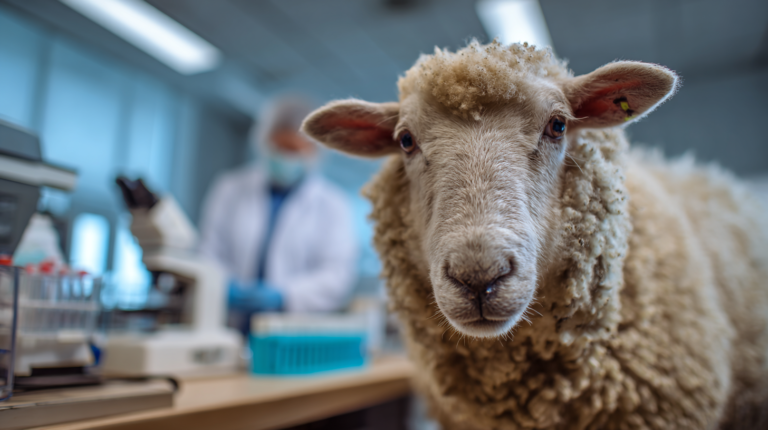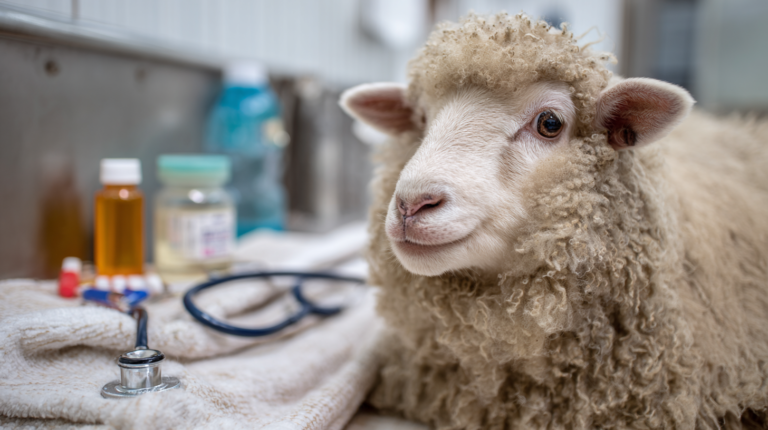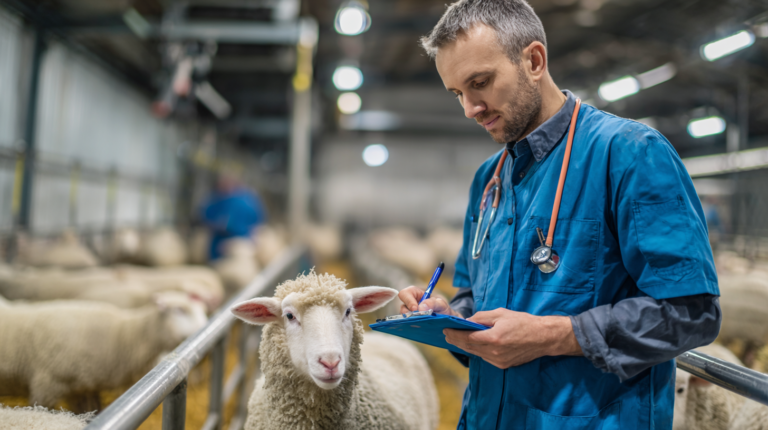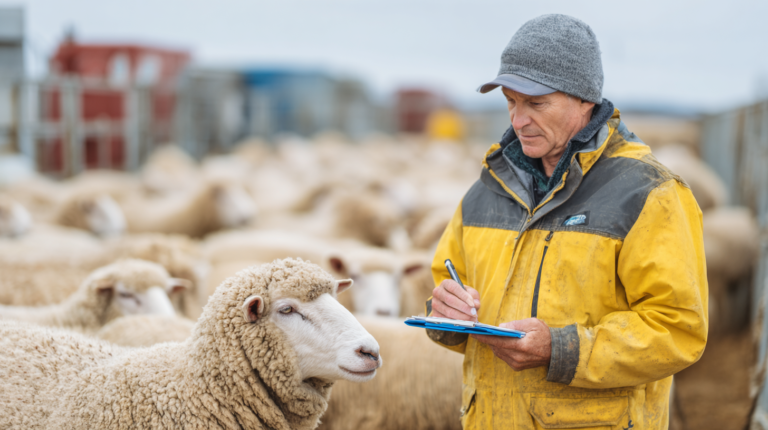Protect your sheep from deadly Clostridial Diseases in Sheep with these 6 proven prevention strategies. Learn symptoms, treatments, and vaccination schedules from veterinary experts.
Table of Contents
When Sarah noticed her prized ram acting lethargic and refusing his morning feed, she initially dismissed it as a minor digestive upset. Within hours, however, the situation escalated dramatically. The animal developed severe abdominal distension and died before emergency veterinary care could be administered. The devastating diagnosis: enterotoxemia, one of the most common and deadly clostridial diseases in sheep.
Clostridial diseases in sheep represent some of the most economically devastating and heartbreaking conditions that shepherds face worldwide. These bacterial infections, caused by various species of Clostridium bacteria, can strike without warning and often prove fatal within hours of symptom onset. Understanding these diseases isn’t just about protecting your flock’s health—it’s about safeguarding your livelihood and preventing the emotional trauma that comes with sudden, preventable livestock losses.
The urgency surrounding clostridial diseases in sheep cannot be overstated. According to recent veterinary studies, these infections account for approximately 15-20% of all sheep mortality in commercial operations, with economic losses reaching millions of dollars annually across the global sheep industry. The rapid progression of these diseases means that prevention, rather than treatment, becomes the cornerstone of effective flock management.
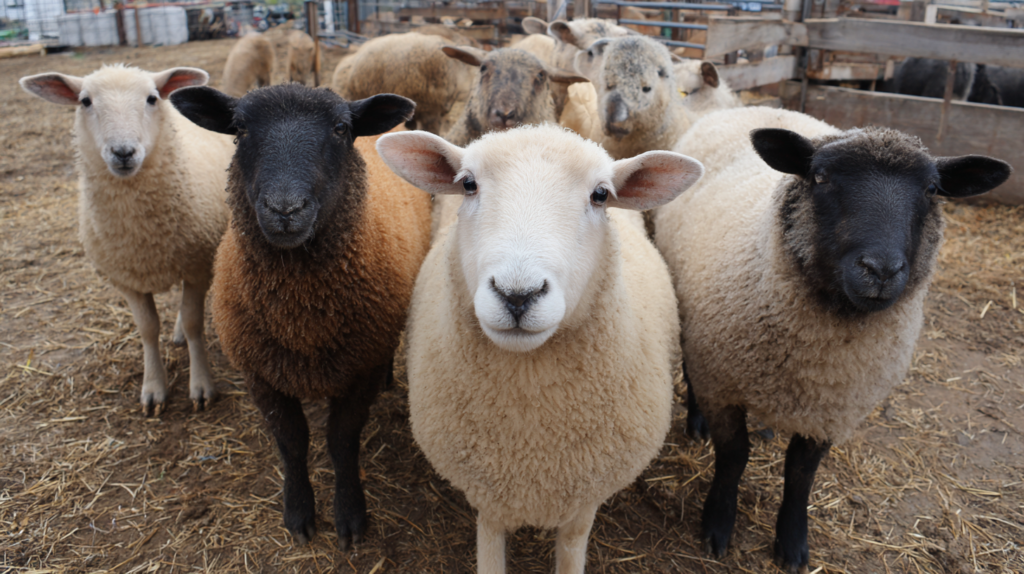
This comprehensive guide will equip you with the knowledge and tools necessary to protect your sheep from these silent killers. From understanding the complex bacterial mechanisms at play to implementing proven prevention strategies, we’ll explore every aspect of clostridial disease management. Whether you’re a seasoned shepherd or new to sheep husbandry, these evidence-based approaches will help you maintain a healthy, productive flock while minimizing the risk of devastating losses.
Understanding Clostridial Diseases in Sheep: The Silent Threat
Clostridial diseases in sheep encompass a group of bacterial infections caused by various species within the Clostridium genus. These gram-positive, spore-forming bacteria are naturally present in soil and the digestive tracts of healthy animals, remaining dormant until specific conditions trigger their activation and rapid multiplication. The transition from harmless inhabitant to deadly pathogen often occurs so swiftly that affected animals may die before clinical signs become apparent.
The most significant clostridial diseases affecting sheep include enterotoxemia (overeating disease), blackleg, malignant edema, tetanus, and botulism. Each condition presents unique challenges and requires specific management approaches, yet they share common characteristics that make them particularly dangerous to sheep populations.
Enterotoxemia, caused primarily by Clostridium perfringens types C and D, stands as the most prevalent clostridial disease in sheep worldwide. This condition typically affects well-fed animals consuming high-energy diets, making it particularly common in intensive farming operations. The bacteria produce potent toxins that cause severe intestinal damage, leading to shock and death within hours of onset.
Blackleg, caused by Clostridium chauvoei, primarily affects young sheep and manifests as acute muscle necrosis. While less common than enterotoxemia, blackleg can devastate flocks when it does occur, particularly in areas with contaminated soil or during periods of stress that compromise immune function.
The spore-forming nature of clostridial bacteria makes them exceptionally resilient in the environment. These spores can survive in soil for decades, remaining viable despite extreme temperatures, drought, and chemical treatments. This environmental persistence means that once an area becomes contaminated, the risk of disease remains elevated for extended periods.
Understanding the pathophysiology of clostridial diseases reveals why prevention is so crucial. These bacteria produce some of the most potent toxins known to science, including lecithinase, hyaluronidase, and various hemolysins. Once toxin production begins, the damage to tissues occurs rapidly and is often irreversible, making early intervention extremely challenging.
Recognizing the Warning Signs: Early Detection Saves Lives
| Disease Name | Causative Agent | Primary Symptoms | Onset Time | Mortality Rate |
|---|---|---|---|---|
| Enterotoxemia (Pulpy Kidney) | C. perfringens Type D | Sudden death, neurological signs, convulsions | 2-6 hours | Very High (90-100%) |
| Lamb Dysentery | C. perfringens Type B | Severe diarrhea, dehydration, abdominal pain | 12-24 hours | High (80-90%) |
| Blackleg | C. chauvoei | Lameness, muscle swelling, crepitation | 24-48 hours | High (85-95%) |
| Tetanus | C. tetani | Muscle rigidity, difficulty eating, “sawhorse” stance | 7-21 days | Very High (95-100%) |
| Malignant Edema | C. septicum | Soft tissue swelling, toxemia, depression | 12-36 hours | High (70-90%) |
| Braxy | C. septicum | Acute gastritis, sudden death, cold weather onset | 6-12 hours | Very High (90-100%) |
Early recognition of clostridial disease symptoms can mean the difference between life and death for affected sheep. However, the rapid progression of these conditions often makes diagnosis challenging, as clinical signs may appear only hours before death occurs. Developing a keen eye for subtle changes in animal behavior and appearance becomes essential for effective flock management.
The most common early warning signs of clostridial diseases in sheep include sudden onset of depression, loss of appetite, and separation from the flock. Affected animals often exhibit a characteristic “tucked up” appearance, with their abdomen appearing drawn and their back arched. These behavioral changes may be accompanied by increased respiratory rate and elevated body temperature, though these signs can be subtle in the early stages.
Digestive disturbances represent another crucial category of warning signs. Sheep with enterotoxemia may develop severe abdominal distension, particularly noticeable when viewed from behind. Diarrhea, often containing blood or mucus, may occur, though some animals may die before developing this symptom. The presence of grain or other undigested feed material in feces can indicate rapid gut transit time associated with toxin production.
Neurological symptoms deserve special attention, as they often indicate advanced disease progression. Affected sheep may exhibit unsteady gait, trembling, or even convulsions. These signs typically appear in the later stages of disease and indicate that immediate veterinary intervention is necessary, though the prognosis remains guarded.
Changes in heart rate and rhythm can provide valuable diagnostic information. Sheep with clostridial diseases often develop rapid, irregular heartbeats as toxins affect cardiovascular function. This tachycardia may be accompanied by pale or cyanotic mucous membranes, indicating compromised circulation and oxygen delivery to tissues.
Environmental factors can provide important context for symptom interpretation. Sudden dietary changes, particularly increases in grain consumption or access to lush pastures, significantly increase the risk of enterotoxemia. Recent stress events, such as transportation, shearing, or weather changes, can predispose sheep to various clostridial diseases by compromising immune function.
The importance of establishing baseline behavior patterns for individual animals cannot be overstated. Sheep that normally compete aggressively for feed but suddenly show disinterest, or typically social animals that isolate themselves, may be displaying early signs of clostridial disease. These behavioral changes often precede more obvious clinical signs by several hours.
Comprehensive Vaccination Strategies: Building Immunity Shields
Vaccination represents the most effective tool for preventing clostridial diseases in sheep, offering protection against multiple bacterial species through carefully designed immunization protocols. Modern clostridial vaccines, commonly referred to as “8-way” or “CDT” vaccines, provide immunity against the most economically significant diseases affecting sheep populations worldwide.
The foundation of any successful vaccination program begins with understanding the immune response to clostridial toxins. These vaccines contain toxoids—inactivated forms of bacterial toxins that stimulate antibody production without causing disease. The quality and potency of these toxoids directly influence the level and duration of protection provided, making vaccine selection and storage crucial factors in program success.
Primary vaccination schedules for sheep should begin early in life, typically at 6-8 weeks of age, with a booster administered 3-4 weeks later. This initial series establishes baseline immunity that must be maintained through annual boosters. Pregnant ewes require special consideration, with vaccination occurring 2-4 weeks before lambing to maximize passive immunity transfer to offspring through colostrum.
The timing of vaccination relative to risk periods significantly impacts program effectiveness. Sheep entering high-risk situations, such as intensive feeding programs or pasture changes, should receive boosters at least 10-14 days before exposure. This timing allows adequate antibody production while ensuring peak immunity during vulnerable periods.
Vaccine storage and handling protocols directly affect product efficacy. Clostridial vaccines must be maintained at refrigerated temperatures (35-45°F) and protected from light and freezing. Even brief exposure to extreme temperatures can destroy vaccine potency, rendering the immunization program ineffective. Proper cold chain management, including the use of insulated containers and temperature monitoring devices, ensures vaccine integrity from purchase to administration.
Administration techniques deserve careful attention to maximize vaccine effectiveness while minimizing adverse reactions. Subcutaneous injection in the neck region provides optimal absorption and reduces the risk of injection site reactions. Using sterile needles and syringes for each animal prevents cross-contamination and ensures accurate dosing.
Record-keeping systems should document vaccination dates, products used, and any adverse reactions observed. This information proves invaluable for troubleshooting program failures and optimizing future immunization schedules. Digital record systems can provide automated reminders for booster vaccinations and track individual animal responses over time.
Vaccine failures can occur despite proper protocols, often due to factors such as genetic variations in immune response, concurrent diseases, or nutritional deficiencies. Regular monitoring of flock health and consultation with veterinary professionals helps identify and address these issues before they compromise flock immunity.
Nutritional Management: The Foundation of Disease Prevention
Nutritional management represents a critical component of clostridial disease prevention, as dietary factors directly influence bacterial growth and toxin production within the digestive system. Understanding the relationship between nutrition and disease risk enables shepherds to implement feeding strategies that maintain optimal health while minimizing the conditions that favor clostridial proliferation.
The concept of “overeating disease” associated with enterotoxemia highlights the importance of controlled feeding practices. Rapid consumption of high-energy feeds, particularly grains and concentrates, creates ideal conditions for Clostridium perfringens multiplication. These bacteria thrive in low-oxygen environments with abundant carbohydrates, producing toxins that cause severe intestinal damage and systemic toxicity.
Gradual dietary transitions represent one of the most effective prevention strategies for clostridial diseases in sheep. When introducing new feeds or increasing concentrate levels, changes should occur over 7-14 days, allowing the digestive system and its microbial population to adapt gradually. This approach prevents the sudden environmental changes that can trigger bacterial overgrowth and toxin production.
Fiber content in sheep diets plays a crucial role in maintaining healthy digestive function and preventing clostridial diseases. Adequate fiber intake promotes normal gut motility and maintains the pH levels that discourage pathogenic bacterial growth. Sheep consuming high-fiber diets, such as quality hay or pasture, show significantly lower rates of enterotoxemia compared to those on grain-heavy rations.
The frequency and timing of feeding can significantly impact disease risk. Multiple small meals throughout the day prove safer than large, infrequent feedings, as they prevent the rapid consumption patterns associated with enterotoxemia. Automatic feeders or controlled access systems can help regulate intake and reduce competition-driven overconsumption.
Water quality and availability directly affect digestive health and disease susceptibility. Clean, fresh water supports normal digestive function and helps maintain the gut environment that resists pathogenic bacterial growth. Contaminated water sources can introduce additional stressors that compromise immune function and increase disease risk.
Mineral supplementation programs should address specific nutrients that support immune function and digestive health. Selenium and vitamin E deficiencies have been linked to increased susceptibility to clostridial diseases, while adequate copper and zinc levels support immune system function. Regular monitoring of mineral status through blood testing ensures optimal supplementation levels.
Feed quality assessment should include regular testing for mycotoxins, which can compromise immune function and increase disease susceptibility. Moldy or damaged feeds should be discarded, as they may contain toxins that create additional stress on the digestive system and immune response.
Environmental Controls: Creating Hostile Conditions for Clostridial Bacteria
| Age Group | Vaccine Type | Timing | Booster Schedule | Notes |
|---|---|---|---|---|
| Lambs (6-8 weeks) | CDT or 8-way | Primary vaccination | 4 weeks later | Start when maternal antibodies decline |
| Lambs (10-12 weeks) | CDT or 8-way | Booster dose | Annual thereafter | Completes primary series |
| Breeding Ewes | CDT or 8-way | 2-4 weeks before lambing | Annual booster | Maximizes passive immunity transfer |
| Breeding Rams | CDT or 8-way | Before breeding season | Annual booster | Maintain breeding soundness |
| Replacement Stock | 8-way | At weaning/purchase | Annual booster | Broader protection recommended |
| High-Risk Groups | 8-way | Based on risk assessment | Semi-annual in high-risk areas | Consider environmental factors |
Environmental management strategies play a crucial role in reducing clostridial disease risk by minimizing bacterial contamination and creating conditions that discourage pathogen survival and transmission. Understanding how environmental factors influence bacterial growth and spore formation enables shepherds to implement targeted interventions that protect flock health.
Pasture management represents the foundation of environmental disease control. Rotation systems that allow adequate rest periods between grazing reduce the accumulation of bacterial spores in soil and vegetation. The recommended minimum rest period of 21-30 days allows for natural die-off of vegetative bacteria while reducing the infectious load in the environment.
Soil conditions significantly impact clostridial spore survival and proliferation. Well-drained soils with good aeration create less favorable conditions for anaerobic bacterial growth compared to waterlogged or compacted areas. Drainage improvements, such as tile systems or surface grading, can reduce the moisture levels that favor clostridial persistence.
Facility design and maintenance directly influence disease transmission risk. Proper ventilation systems reduce humidity and improve air quality, creating conditions that discourage bacterial growth. Regular cleaning and disinfection of feeding areas, water systems, and shelter facilities remove organic matter that can harbor clostridial spores.
Waste management protocols should address the rapid removal and proper disposal of manure and bedding materials. Composting systems that achieve temperatures above 140°F for extended periods can effectively destroy clostridial spores, while improper storage creates ideal conditions for bacterial multiplication.
Quarantine procedures for new animals help prevent the introduction of clostridial diseases into healthy flocks. Incoming sheep should be isolated for 14-21 days, during which time they receive appropriate vaccinations and health monitoring. This isolation period allows for the detection and treatment of subclinical infections before they spread to the main flock.
Wildlife management strategies should address the potential for disease transmission from wild animals sharing grazing areas with sheep. Deer, rabbits, and other wildlife can carry clostridial bacteria and contaminate pastures through their feces. Fencing and habitat modification can reduce wildlife contact with sheep and their feed sources.
Weather monitoring and response protocols help manage disease risk during periods of environmental stress. Extreme temperatures, sudden weather changes, and storms can compromise sheep immunity and increase disease susceptibility. Providing adequate shelter and adjusting management practices during high-risk periods reduces the likelihood of disease outbreaks.
Stress Reduction: Strengthening Natural Defenses
Stress management represents a critical yet often overlooked component of clostridial disease prevention in sheep. Understanding how various stressors compromise immune function and create conditions favorable for bacterial proliferation enables shepherds to implement management practices that strengthen natural disease resistance.
Transportation stress ranks among the most significant risk factors for clostridial diseases in sheep. The combination of physical stress, dietary changes, and environmental disruption during transport creates ideal conditions for bacterial overgrowth. Pre-transport preparation, including vaccination boosters and gradual feed restriction, can reduce this risk significantly.
Handling procedures should minimize stress through the use of proper facilities and techniques. Well-designed handling systems that utilize sheep’s natural flocking behavior reduce anxiety and physical trauma. Training handlers in low-stress techniques, such as moving animals at their natural walking pace and avoiding sudden movements, helps maintain immune function during routine procedures.
Housing conditions directly impact stress levels and disease susceptibility. Overcrowding increases competition for resources and elevates stress hormones that suppress immune function. Providing adequate space, proper ventilation, and comfortable bedding creates an environment that supports natural disease resistance.
Social dynamics within the flock can create chronic stress that predisposes sheep to clostridial diseases. Introducing new animals, changing group compositions, or removing dominant individuals can disrupt established hierarchies and increase stress levels. Gradual transitions and careful monitoring of social interactions help minimize these disruptions.
Climatic stress factors require particular attention in clostridial disease prevention. Extreme temperatures, sudden weather changes, and seasonal transitions can compromise immune function and increase disease risk. Providing appropriate shelter, windbreaks, and heating or cooling systems helps maintain optimal environmental conditions.
Nutritional stress, including both deficiencies and excesses, significantly impacts immune function and disease susceptibility. Sudden dietary changes, feed shortages, or poor-quality feeds create physiological stress that favors clostridial proliferation. Maintaining consistent, high-quality nutrition supports immune function and reduces disease risk.
Routine monitoring for stress indicators helps identify problems before they compromise flock health. Changes in eating behavior, altered social interactions, or decreased activity levels may indicate elevated stress levels. Early intervention through environmental modifications or management changes can prevent stress-related disease outbreaks.
Advanced Monitoring and Early Intervention Systems
| Time Stage | Clinical Signs | Diagnostic Methods | Treatment Options | Prognosis |
|---|---|---|---|---|
| 0-2 Hours (Hyperacute) | Sudden death, no prior symptoms observed | Post-mortem examination, tissue samples | Prevention only – treatment impossible | Fatal (100%) |
| 2-6 Hours (Acute) | Neurological signs, convulsions, ataxia | Clinical history, rapid progression, environmental factors | High-dose antibiotics Anti-toxins Supportive care | Very Poor (5-10% survival) |
| 6-12 Hours (Early) | Depression, anorexia, mild neurological signs | Blood tests, clinical examination, vaccination history | Penicillin G Fluid therapy Nursing care | Poor (15-25% survival) |
| 12-24 Hours (Subacute) | Diarrhea, dehydration, weakness, reduced appetite | Fecal examination, blood chemistry, culture | Antibiotics Electrolyte replacement Probiotics | Guarded (30-50% survival) |
| 24-48 Hours (Chronic) | Lameness, localized swelling, muscle involvement | Radiographs, ultrasound, bacterial culture | Extended antibiotic therapy Anti-inflammatory drugs Wound management | Fair to Good (60-80% survival) |
| Prevention Phase | No clinical signs – healthy animals | Risk assessment, vaccination status, environmental evaluation | Vaccination programs Nutritional management Environmental controls | Excellent (95-99% protection) |
Modern flock management increasingly relies on sophisticated monitoring systems that enable early detection of clostridial diseases and other health problems. These technologies, combined with systematic observation protocols, provide shepherds with the tools necessary to identify and address health issues before they become catastrophic.
Temperature monitoring systems, including both individual animal and environmental sensors, provide valuable early warning signs of disease outbreaks. Sudden temperature elevations in individual sheep can indicate the onset of clostridial diseases, while environmental temperature fluctuations may predict periods of increased disease risk.
Behavioral monitoring technologies, such as activity sensors and automated feeding systems, can detect subtle changes in animal behavior that precede clinical signs of disease. Sheep with developing clostridial diseases often show decreased activity levels and altered feeding patterns hours before more obvious symptoms appear.
Rumen pH monitoring represents an emerging technology that can provide early warning of conditions favoring clostridial proliferation. Sudden drops in rumen pH associated with high-grain diets create ideal conditions for enterotoxemia development. Real-time monitoring allows for immediate dietary adjustments that can prevent disease progression.
Regular health assessments should include systematic evaluation of body condition, behavior, and vital signs. Standardized scoring systems help ensure consistent evaluation and enable early detection of subtle changes that might indicate developing health problems. These assessments should be conducted by trained personnel using established protocols.
Laboratory testing protocols should include periodic monitoring of blood parameters that indicate stress or disease susceptibility. Elevated white blood cell counts, changes in protein levels, or alterations in mineral concentrations can provide early warning of health problems before clinical signs appear.
Necropsy protocols for animals that die suddenly should include comprehensive evaluation for clostridial diseases. Proper sample collection and laboratory analysis not only confirm the cause of death but also provide valuable information for preventing future cases. Working with veterinary pathologists ensures accurate diagnosis and appropriate follow-up measures.
Record-keeping systems should track all health-related observations, treatments, and outcomes. Modern database systems can identify patterns and trends that might not be apparent through casual observation. These records prove invaluable for troubleshooting recurring problems and optimizing prevention strategies.
Emergency Response and Treatment Protocols
Despite the best prevention efforts, clostridial disease outbreaks can still occur, making rapid response and treatment protocols essential components of comprehensive flock management. Understanding the limitations of treatment options and the importance of immediate intervention can help minimize losses when prevention fails.
Emergency recognition protocols should enable rapid identification of clostridial diseases based on clinical signs and flock history. The acute nature of these conditions means that delays in recognition and treatment significantly reduce the likelihood of successful outcomes. Training all farm personnel in disease recognition ensures that problems are identified and addressed promptly.
Immediate treatment options for clostridial diseases remain limited due to the rapid progression of these conditions and the potent nature of bacterial toxins. Penicillin administration may be beneficial in very early stages of disease, but its effectiveness decreases rapidly as toxin levels increase. Supportive care, including fluid therapy and anti-inflammatory medications, may provide some benefit in selected cases.
Veterinary consultation should be sought immediately when clostridial diseases are suspected. Veterinarians can provide definitive diagnosis, appropriate treatment protocols, and guidance on preventing further cases. The rapid progression of these diseases makes early professional intervention crucial for any chance of treatment success.
Flock management during outbreaks requires careful attention to preventing additional cases while managing affected animals. Immediate vaccination of unaffected animals may provide some protection, though the two-week period required for immunity development limits its effectiveness during acute outbreaks. Dietary modifications, such as reducing grain intake and increasing fiber levels, can help reduce risk in unaffected animals.
Quarantine procedures should isolate affected animals to prevent disease spread and allow for intensive monitoring and treatment. However, the infectious nature of clostridial diseases means that prevention efforts must focus on the entire flock rather than just affected individuals.
Post-outbreak analysis should include thorough investigation of factors that contributed to the disease outbreak. Feed analysis, environmental assessment, and vaccination history review can identify correctable factors that increase disease risk. This analysis provides valuable information for preventing future outbreaks.
Financial Impact and Economic Considerations
The economic impact of clostridial diseases in sheep extends far beyond immediate mortality losses, encompassing reduced productivity, increased veterinary costs, and long-term effects on flock performance. Understanding these economic factors helps justify prevention investments and guides decision-making in flock management.
Direct mortality costs represent the most obvious economic impact of clostridial diseases. With individual sheep values ranging from $200 to $500 or more for breeding stock, sudden losses can quickly reach thousands of dollars. When combined with the typical 15-20% mortality rate associated with these diseases, the financial impact becomes substantial even for small operations.
Reduced productivity in surviving animals represents a significant hidden cost of clostridial diseases. Sheep that recover from these conditions often show decreased growth rates, reduced reproductive performance, and increased susceptibility to other diseases. These long-term effects can persist for months or even years following initial infection.
Treatment costs for clostridial diseases, while relatively modest compared to mortality losses, can accumulate quickly during outbreaks. Emergency veterinary calls, medications, and supportive care expenses add to the economic burden. More importantly, the low success rate of treatment means that these costs often provide little return on investment.
Prevention costs, including vaccination programs, nutritional management, and environmental controls, represent wise investments when compared to potential losses. Annual vaccination costs typically range from $2 to $5 per animal, while the value of preventing even a single death far exceeds these expenses.
Insurance considerations should include coverage for mortality losses due to clostridial diseases. Many livestock insurance policies provide coverage for sudden death from these conditions, though specific terms and exclusions vary. Understanding policy details and maintaining proper documentation ensures maximum coverage when losses occur.
Market impact extends beyond individual operations to affect regional sheep industries. Repeated outbreaks can damage the reputation of local producers and reduce consumer confidence in sheep products. This broader economic impact emphasizes the importance of industry-wide prevention efforts.
Frequently Asked Questions
Expert answers to common questions about clostridial diseases in sheep
No questions found matching your search. Try different keywords or browse all questions above.
For more expert pet care tips and product recommendations, visit BlithePet.com — your trusted source for pet wellness.
Conclusion
Clostridial diseases in sheep represent one of the most serious threats to flock health and economic viability in modern sheep production. The rapid progression of these conditions, combined with their high mortality rates and limited treatment options, makes prevention the cornerstone of effective management. Through comprehensive vaccination programs, careful nutritional management, environmental controls, and stress reduction strategies, shepherds can significantly reduce the risk of these devastating diseases.
The six proven prevention strategies outlined in this guide provide a framework for protecting your flock from clostridial diseases while maintaining productive and profitable operations. Remember that successful prevention requires consistent implementation of multiple strategies rather than relying on any single approach. Regular consultation with veterinary professionals, ongoing education about emerging threats, and adaptation of management practices based on local conditions will help ensure long-term success.
The investment in clostridial disease prevention pays dividends not only in reduced mortality and veterinary costs but also in improved animal welfare and peace of mind. By implementing these evidence-based strategies and maintaining vigilant monitoring for early warning signs, you can protect your sheep from these silent killers while building a resilient and sustainable operation.
Have a similar experience with your pet? Share it in the comments below!

